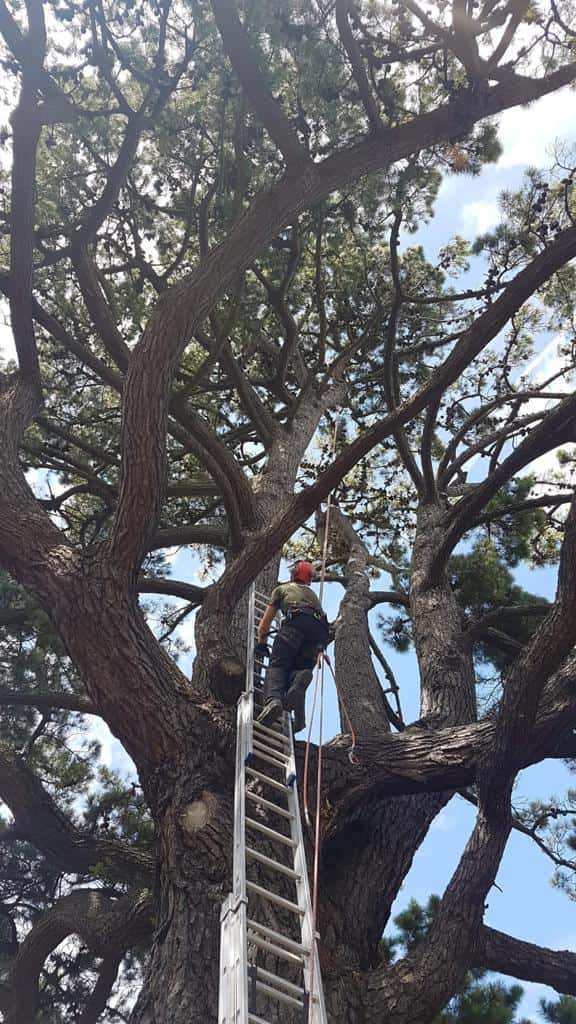Trees are often considered silent sentinels in our landscapes, growing over many years and standing as natural monuments to time. However, when the decision is made to fell a tree, it’s not just about removing a plant from the ground – it’s often a carefully considered process shaped by a variety of factors. The hidden history behind the need for tree felling can be complex, involving environmental, safety, aesthetic, and even ecological considerations.
At EM Tree Surgery Cheltenham, we understand that every tree has its story, and it’s essential to recognise the reasons behind the decision to remove or fell a tree. In this article, we’ll explore the factors that influence the felling process and why professional tree surgery is crucial for maintaining a safe and healthy environment.
1. Environmental and Ecological Considerations
Every tree plays a role in the local ecosystem, providing habitats for wildlife, supporting the carbon cycle, and contributing to the overall biodiversity of an area. However, not all trees thrive in their environment indefinitely. Trees may need to be felled due to environmental changes that affect their health or pose risks to other plants and trees.
For example, if a tree has become diseased or infested with pests, it can spread harmful pathogens to other vegetation. In such cases, removing the tree can help protect the surrounding flora and restore balance to the ecosystem. Conversely, invasive species may need to be removed to prevent them from overwhelming native species. In these cases, felling decisions are often rooted in preserving the wider environment and promoting ecological health.
2. Safety and Structural Concerns
One of the most common reasons trees are felled is due to safety concerns. Trees, especially older or damaged ones, can pose significant risks to both property and people. Storm damage, disease, and rot can weaken the structure of a tree, making it more susceptible to falling or shedding large branches. When a tree is unstable, it can cause serious harm to homes, vehicles, or public spaces, especially if it’s located near roads, buildings, or pathways.
In some cases, roots can extend and damage underground structures, such as foundations, pipes, and drainage systems. A tree’s roots can cause significant issues if left unchecked, leading to costly repairs. Felling in these instances is often the most effective way to prevent further damage and maintain a safe environment for both humans and property.
3. Tree Health and Longevity
The health of a tree plays a significant role in the decision to fell it. Trees, like any living organism, can suffer from diseases and environmental stressors that may shorten their lifespan. In some cases, a tree’s health may deteriorate to the point where it becomes impossible to save. For example, trees affected by root rot, fungal infections, or pest infestations may no longer be able to grow or support themselves.
In such cases, tree surgery professionals may attempt to save the tree through pruning or other treatments. However, if the damage is too severe, felling may be the only option to prevent further deterioration and ensure the safety of the area. A tree that is no longer healthy or structurally sound can be hazardous, and it may be better to remove it entirely to make room for healthier growth.
4. Aesthetic and Land Use Considerations
Sometimes, trees need to be felled for aesthetic reasons or because of changes to land use. For example, when landscaping projects are underway or a property is being redeveloped, existing trees may obstruct views, interfere with the design, or limit the use of the space. Similarly, as trees mature, they can cast excessive shade over gardens, patios, or lawns, impacting the growth of plants or making outdoor spaces less enjoyable.
In these situations, felling a tree may be necessary to optimise the landscape, improve visibility, or create a more functional outdoor area. However, it’s important to balance aesthetic considerations with the environmental impact. A professional tree surgeon will evaluate the situation and help determine whether felling is the best solution or if pruning or other measures can achieve the desired effect without removing the tree altogether.
5. Legal and Regulatory Factors
In some cases, trees may be protected by local laws or regulations that require specific permissions for felling. For example, trees within conservation areas or those with tree preservation orders (TPOs) cannot be removed without obtaining consent from the local authority. A tree surgeon must consider these legal constraints before proceeding with any felling work.
In cases where tree felling is necessary but there are legal restrictions, it is crucial to navigate the proper channels and obtain the necessary approvals. A professional tree surgeon can help ensure that all legal requirements are met before starting the work, avoiding fines or legal issues.
Conclusion
The decision to fell a tree is never made lightly. Whether it’s due to safety concerns, ecological considerations, tree health, or aesthetic reasons, each tree’s story is unique. At EM Tree Surgery Cheltenham, we understand the importance of making informed decisions when it comes to tree management. Our team of experienced professionals can assess your tree’s health, identify potential risks, and provide expert guidance on whether tree surgery or felling is the best course of action.
If you’re in Cheltenham, Gloucestershire, and need advice or assistance with tree management, don’t hesitate to contact us. We’re here to ensure the safety, health, and beauty of your trees while providing a professional and environmentally responsible service.
Call us on: 01242 569 996
Click here to find out more about EM Tree Surgery Cheltenham
Click here to complete our contact form and see how we can help with your tree needs.

